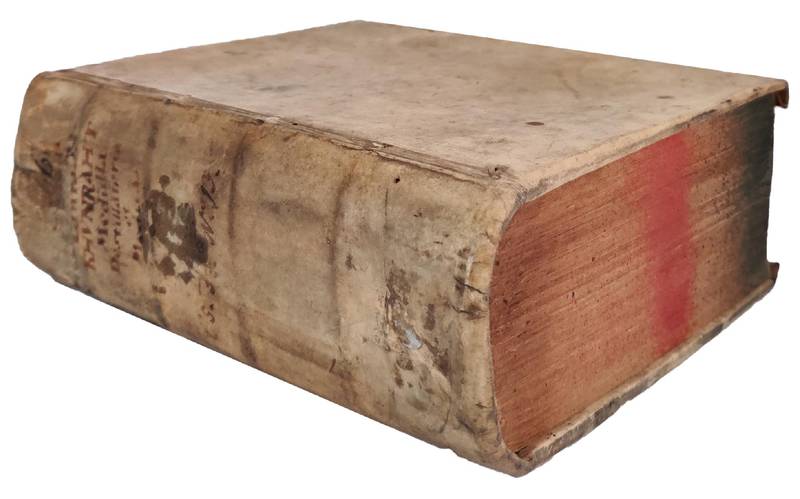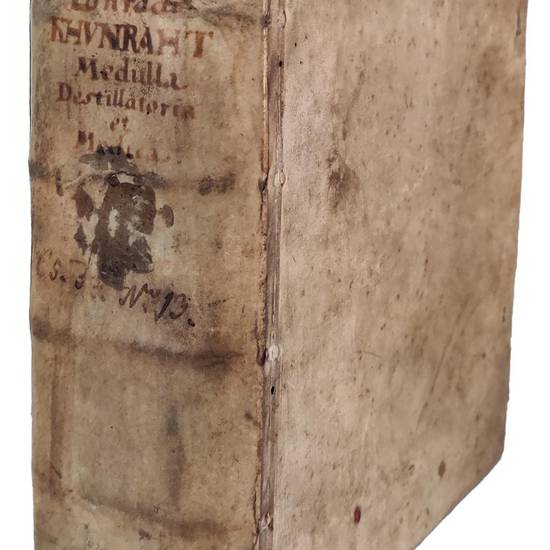Medulla Destillatoria et Medica quartum aucta & renovata. Das ist: Gründliches und Vielbewehrtes Destillier und ArtzneyBuch / darinnen begriffen / wie der Spiritus Vini, durch mittel seines hinter ihm verlassenen Saltzes/ Auch allerley köstliche Oliteten, Spiritus, Salia, &c. auß mancherley animalibus, mineralibus und vegetabilibus, künstlich können destillirt / und in quintam Essentiam zur höchsten exaltation gebracht: Auch vermittelst solcher Extractionum, Aurum Potabile, allerley herliche Medicamenta, Wundbalsam / Stichpflaster / Güldene Wasser / und dergleichen [...] in allerhand vorfallenden Gebrechen und Kranckheiten heylsamlich gebraucht werden [...] Mit besonderm fleiß [...] colligirt, Jetzo aber auffs newe zum Vierdten mal trewlich revidirt, in eine richtige Ordnung gebracht / und mehr als die helffte vermehret und gebessert / Durch Conradum Khunrath Lipsensem. Und jetzt von einem Hochgelehrten und Vornemen erfahrnen der Artzney und Chymiae [...] in Druck befördert
Autore: KHUNRATH, Conrad (1555-1607)
Tipografo: ex Bibliopolium Frobenianum [Georg Ludwig Frobenius]
Dati tipografici: Hamburg, 1614-1615
Two parts in one volume, 4to (186x153 mm). Part 1: [6], 12 leaves, 13-628 pp., [18] ll.; part 2 (Medullae Destillatoriae et Medicae Ander Theil): [4] ll., 630 pp., [19] ll. Collation: a4 b2 A-Z4 Aa-Zz4 Aaa-Zzz4 Aaaa-Pppp4 Qqqq2; a4 A-Z4 Aa-Zz4 Aaa-Zzz4 Aaaa-Nnnn4. Title pages printed in red and black. Contemporary stiff vellum with overlapping edges, inked title on spine, colored edges (traces of ties, slightly soiled). On the first title page stamp of the Bibliotheca Haffneriana and later manuscript ownership's inscription “N. Franchimont”. On the first front flyleaf manuscript shelf mark. Uniformly browned, but a very good, genuine copy.
Fourth edition of part 1 (a reprint of the third edition of 1605, greatly enlarged as compared to the two previous ones of 1594 and 1601) and first edition of part 2 (Ander Theil) of this very successful distillation book that was reprinted several times up to the 18th century.
“The two volumes, each of 650 pages, with detailed subject indexes, contain descriptions of many kinds of illnesses, prescription for curing them, and manifold applications of the process of distillation, including instructions for contrasting the appropriate apparatus. Distilling is defined as ‘dissolution or separation of a composed body into its simpler parts by help of heat'. This operation, subsequently improved by others, was used in the Chymische Kunst. All is based on practical experience, the result of which – the medicament – is therefore called ‘experiment'. Numerous medicines are treated: fruits, plants, salts, natural waters, stones, and animals – in short, as much as God has provided in the three natural kingdoms. Since human nourishment is considered to be essential for health, descriptions of grains, olives, and other foods are included. Khunrath was a follower of Paracelsus, whim he knew personally, but his reference to Georg Agricola and Conrad Gesner confirms the influence also of metallurgical knowledge on the development of chemistry. Although Khunrath as his contemporaries were doing, occasionally attributed cures to God's blessing or the effects of the signs of the zodiac and the planets, his book represents a masterpiece of clear, practical prescriptions and in the 17th century appears to have been considered a storehouse of information on curing” (DSB).
V.F. Brüning, Bibliographie der alchemistischen Literatur, 1086; VD 17, 23:290956T; D.S.B., VII, pp. 354-355; Ferguson I, 462; Schöne, 13478; Simon, 161.
[10377]








